Trackman revolutionised the golf world in both teaching and club fitting, with the first unit being introduced to market in 2004 (to find out more about the history of trackman, view our previous blog here). But how has it changed the way you buy clubs? Let us take a deep dive into club fitting and why we use Trackman to optimise your equipment.
Prior to launch monitors, club fitting was more of a static process. A static fitting typically consisted of analysing or observing your height, arm length and stance to the golf ball. This would help dictate what length and lie angle of club you would need. In theory, if you are super tall with short dinosaur like arms you need longer, more upright clubs and if you were shorter with longer arms then shorter clubs flatter would be better.
The issue with this static process is we are making 2 main assumptions:
- That you do not make any compensations in setup
- That you return to the same positions at impact
We now go through a more dynamic fitting process, which involves us not just looking at your static posture but more importantly how you deliver the club at impact.
In the picture below, you can see the club data and visuals we get from trackman at impact, including location of strike and your lie angle.
The video above shows my swing on our swing catalyst system. Our cameras have global shutters meaning we can see the lie angle changing and the shaft moving (click here to find out more about our teaching rooms). You can clearly see from address to impact, a very different lie angle is being produced with the toe being very much in the ground!
What about a lie board?
A lie board can tell us if you are delivering the club toe down or toe up, however we see a lot of people change intentions when hitting onto a lie board and it does not particularly feel great!
Not only is trackman tracking the golf club and how you deliver the loft and lie, but also the golf ball. What is unique to Trackman compared to other launch monitors is its doppler radar technology which tracks the golf ball up to 400 yards, until it stops rolling. This allows us the very best ball flight data, instead of other launch monitors which have limited tracking capabilities and then predict the full flight model. This is also why we are not indoor club fitters with a net and sim – better data is worth the 5 layers of clothing in the winter!!
“Why is tracking the ball so important?”
Understanding your club delivery and ball flight is the first key to a good club fitting. We are looking mainly at the following areas:
Launch and Spin
Curve
Land Angle
Ball Speed
These 4 areas are going to effect how in control of your ball you are. All of which, we are effect heavily during custom fitting. To find out more about the importance of launch and spin, click here.
Another key feature of Trackman for club fitting is the ability to “tag” clubs. This means when we are making changes too your club specification (ie, shaft, head etc) we change the tag so we can compare the changes against each other. You can see through the image below, each tag will be a different colour and labelled so we know which is which.
Summary
On top of our extensive experience, custom fit accreditations and wide array of products, utilising Trackman’s unrivalled tracking technology means we can offer the complete bespoke custom fitting service. Whether you are a beginner, seasoned tour professional, or somewhere in the middle, having this level of custom fit service will add great value to your game.
To find out more about our custom fit services please get in touch, or to view our services click here.







